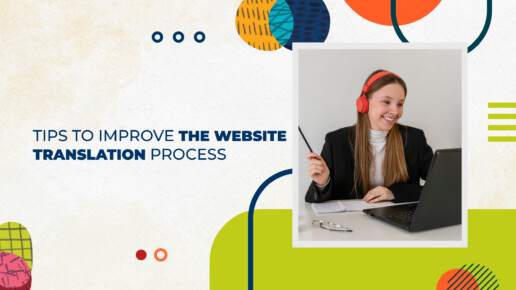`
Tips To Improve The Website Translation Process
Introduction to Website Translation
Reaching a larger audience and breaking into new markets require growing your web presence internationally. Translation of websites is one of the essential elements of worldwide expansion. Translating your website into other languages will allow you to interact with a wide range of global audiences. Nonetheless, translating websites presents a unique set of difficulties.
Choosing the Right Translation Method
Businesses frequently have to decide between machine translation and human translation when it comes to translating websites. Although machine translation is quick and inexpensive, accuracy and context may be lacking. Conversely, human translation can be costly and time-consuming but guarantees accuracy and cultural sensitivity.
Understanding Cultural Nuances
When translating websites, cultural awareness is crucial to avoiding alienating or insulting your target audience. It’s critical to comprehend the subtle cultural differences in the target language and modify your material appropriately. This entails staying away from idioms, slang, and imagery that could not appeal to the intended audience.
Using Translation Tools and Software
Software and tools for translation can increase productivity and streamline the process. With the help of these technologies, translators may collaborate more easily and keep consistency between languages. Features like translation memory and glossaries are also available.
Localization Strategies
Localization goes beyond translation by adapting content for specific regions or markets. This includes not only translating text but also considering factors such as language variations, currency, date formats, and cultural references to create a seamless user experience for local audiences.
Quality Assurance in Translation
Maintaining quality is paramount in website translation to ensure accuracy and professionalism. This involves thorough proofreading and editing by native speakers to correct any errors and inconsistencies in the translated content.
Collaborating with Professional Translators
Working with professional translators who are native speakers of the target language is essential for achieving high-quality translations. Building long-term relationships with translators can help establish trust and ensure consistent quality in your translated content.
Optimizing for SEO in Multiple Languages
Translating your website also involves optimizing it for search engines in multiple languages. This includes translating keywords, metadata, and alt tags to improve visibility and ranking in local search results.
Testing and Feedback
Gathering feedback from native speakers and conducting user testing can help identify any issues or areas for improvement in the translated content. Iterative testing and feedback loops are essential for refining translations and ensuring they meet the needs and expectations of the target audience.
Managing Multilingual Content
Effectively managing multilingual content requires careful organization and coordination to ensure consistency and accuracy across languages. This includes implementing workflows and tools for content localization and version control.
Training and Support for Content Contributors
Providing training and support for content contributors can help ensure they understand the requirements for creating translatable content. This includes offering language training and guidelines for writing in a way that is easily translatable.
Monitoring Performance and Analytics
Tracking performance metrics across languages can provide valuable insights into the effectiveness of your translation efforts. Analyzing engagement metrics such as traffic, bounce rate, and conversions can help identify trends and opportunities for improvement.
Cost Considerations in Website Translation
While website translation is essential for global expansion, it’s important to consider the associated costs. Budgeting for translation services and balancing cost with quality is crucial for maximizing ROI and achieving long-term success in international markets.
Legal and Regulatory Compliance
Ensuring compliance with local laws and regulations is critical when translating your website into multiple languages. This includes addressing legal requirements related to data privacy, consumer protection, and accessibility to avoid potential legal issues.
Conclusion
Website translation is a complex process that requires careful planning, execution, and ongoing maintenance. By following these tips and best practices, businesses can improve the website translation process and effectively reach global audiences with localized, culturally relevant content.

